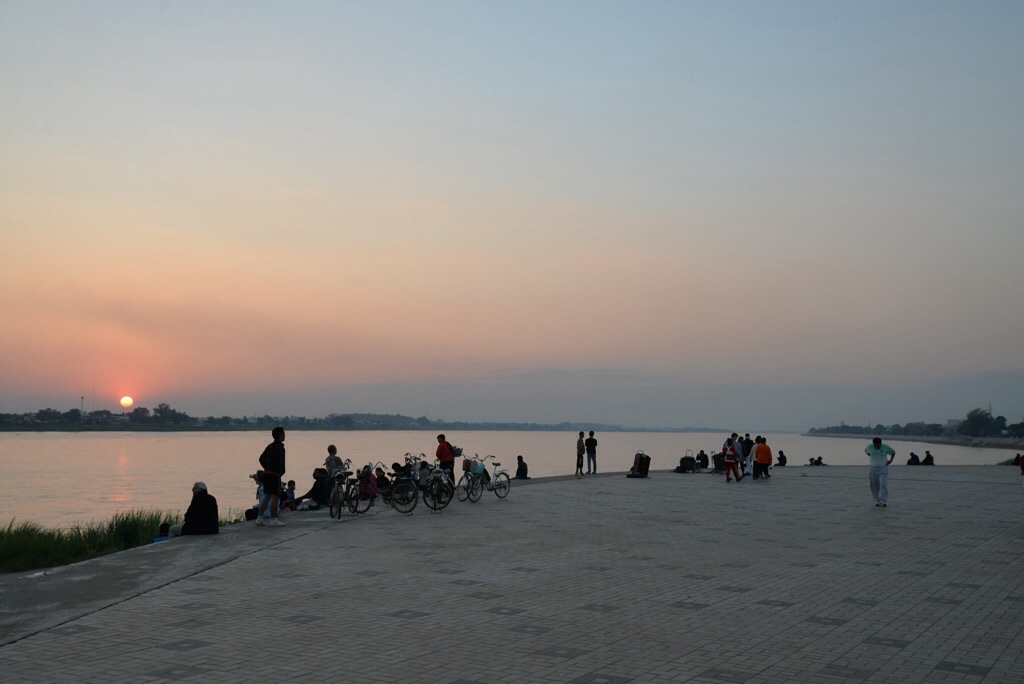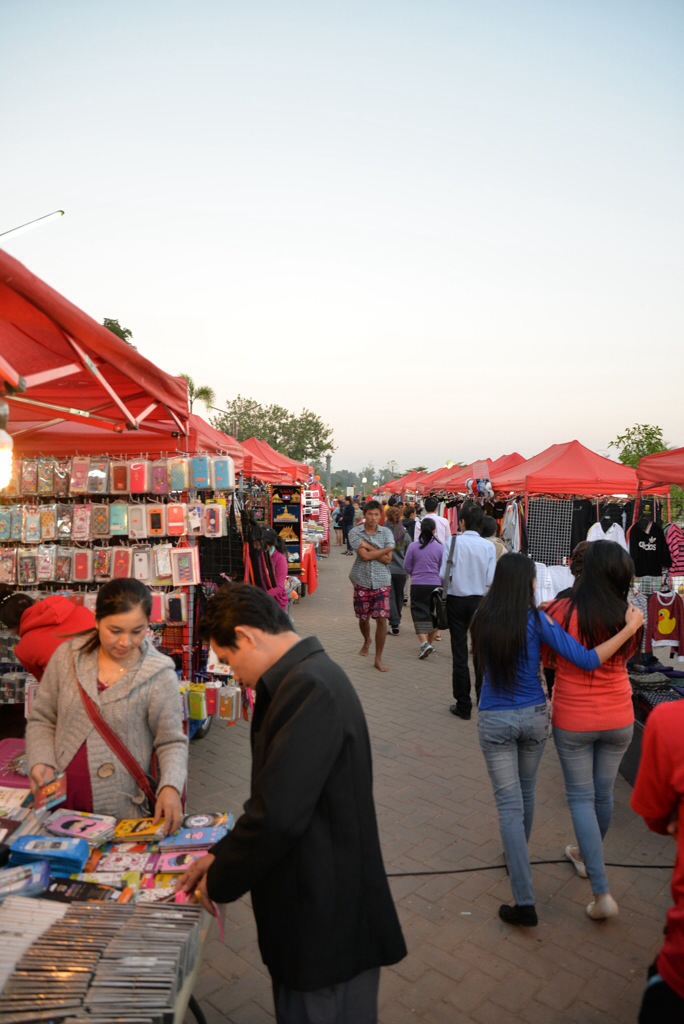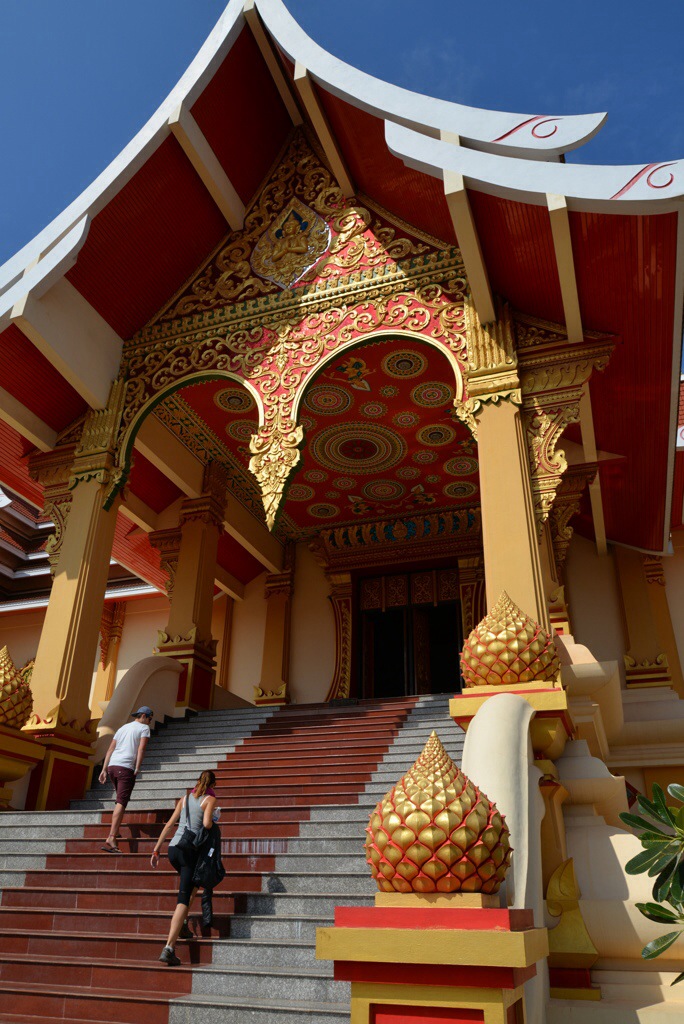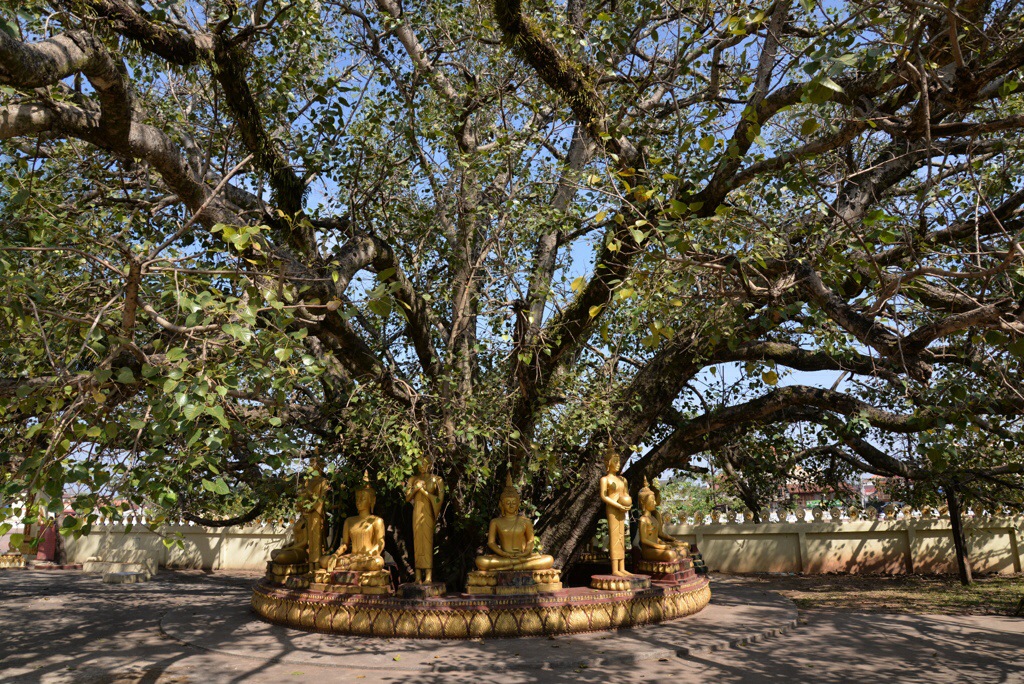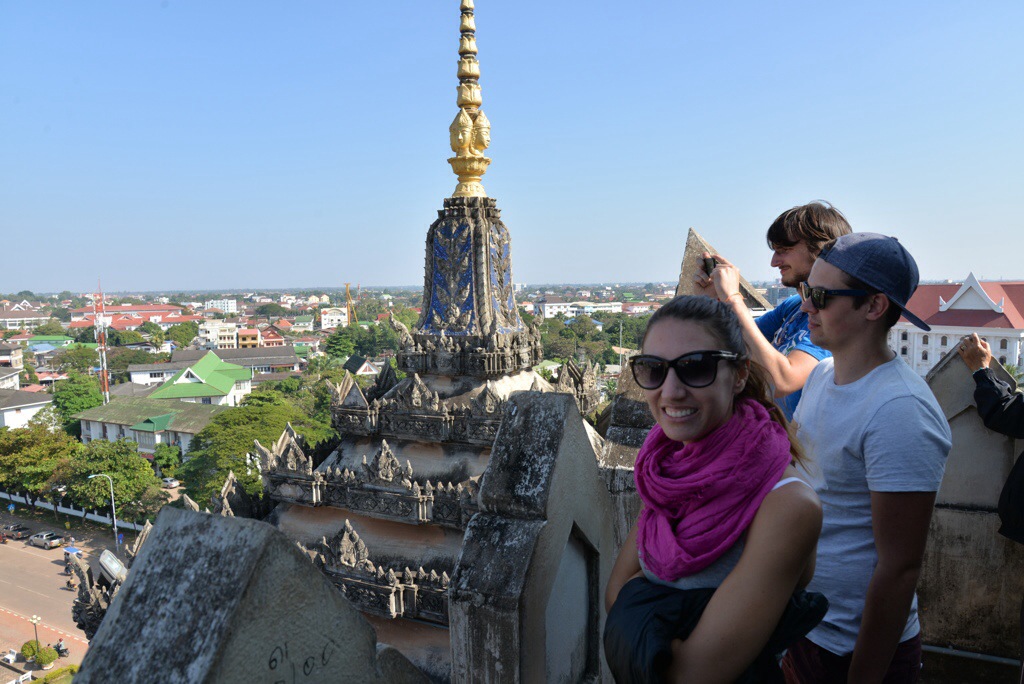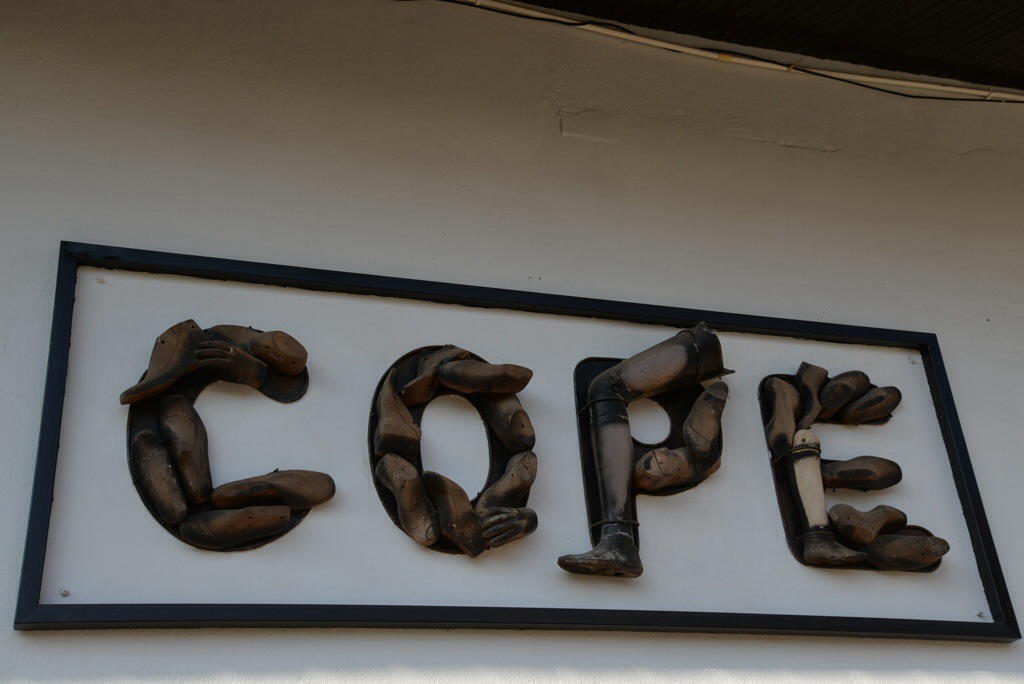Vientiane
While we were looking forward to a few days in Vientiane after a great time in Luang Prabang, we were left disappointed. Somehow the French colonial charm didn’t make its way to Laos’ capital. Instead, the city streets looked just like any other city’s streets; the temples that line main streets look ordinary and worn down. Even the coffee shops felt like a big city chain as opposed to the charming, welcoming environment we found in Luang Prabang.
But, we still had to be in Vientiane, as we were headed to Southern Laos, and all roads in Laos run through Vientiane. We strolled the riverfront, which has a large market and is apparently the go to places for young couples to gather at sunset.
We also saw the main sights of Vientiane, but they were underwhelming. Our first stop was Pha That Luang, a gold stupa that is the national symbol of Laos and is on every coin in the country. But it’s simply a gold-painted stupa, located in the middle of a huge open plaza, paved with stones but filled with parked cars. Other temples dot the plaza as well.
We also climbed Patuxai, a copy of the French Arc de Triomphe, although signs there note that Patuxai was built just slightly taller in order to out do the French. There was a nice view of the town from the top, but not all that much to see.
Our favorite attraction, although it seems wrong to label it an “attraction,” was the COPE visitor center. COPE is an NGO that helps Laotians who have lost limbs obtain prosthetic limbs. During the Vietnam war, the US dropped millions of pounds of bombs on Laos in an effort to stop the resupply effort on the Ho Chi Min Trail. Many of those bombs failed to explode and are still lying around Laos. These “unexploded ordinances” are a huge danger for the population – kids playing in fields are unaware they are dangerous, and even adults risk investigating them because they contain metal that can be sold for significant amounts of money. The visitor center was a somber experience, with pictures and statistics of the numerous Laos children and adults who have lost arms and legs.


